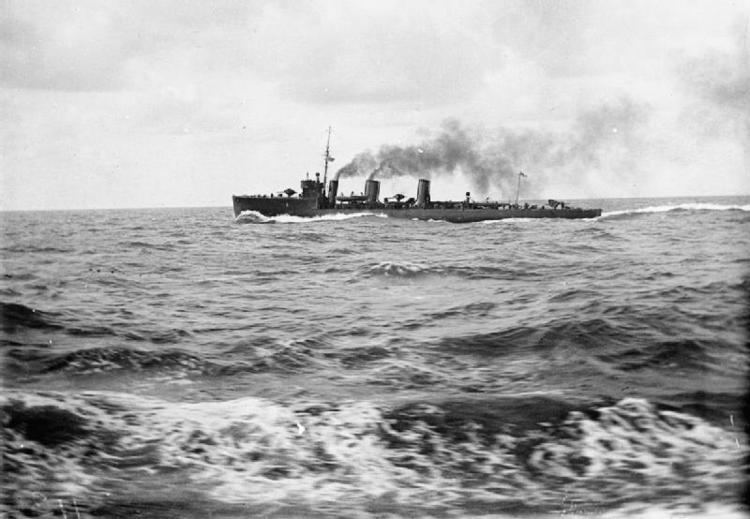Lost 3 | Preceded by Acasta class Completed 22 | |
 | ||
Name Laforey- or L-class destroyer | ||
The Laforey class (redesignated in October 1913 as the L class) was a class of 22 torpedo boat destroyers of the Royal Navy, twenty of which were built under the Naval Programme of 1912–13 and a further two under the War Emergency Programme of 1914. As such they were the last pre-war British destroyer design. All served during World War I during which three were lost. As was previous Royal Navy practice, these ships were originally allocated names with no particular systematic theme. However, whilst still building in 1913 they were allocated to the L class and were given new names beginning with the class letter, the first ships to follow this new convention (see naming conventions for destroyers of the Royal Navy).
Contents
Design
The Laforeys were based on the modified Acasta-class destroyer Fortune that trialled a new hull form that was slightly longer and narrower than that of the Acastas and incorporated a clipper bow. Except Laurel, Liberty, Lark, Landrail, Laverock and Linnet which had two funnels, all the ships had three funnels of equal height, the middle being thicker than the fore and aft.
Armament was increased over the Acastas, with the number of torpedo tubes doubled to two pairs - abaft the funnels - with a small searchlight platform in between. The gun armament remained as three QF 4-inch, but was more usefully distributed; with one gun each on the forecastle, between the funnels (the after pair in ships with three) and on the quarterdeck.
Propulsion
Laforey and Leonidas were fitted with geared (as opposed to direct drive) steam turbines for increased efficiency. Lochinvar, Llewellyn and Lennox were the first destroyers built for the Royal Navy at William Beardmore's new naval construction yard at Dalmuir.
Minelayer
Legion was later fitted for minelaying, for which purposes her quarterdeck gun and torpedo tubes were removed and screens were erected aft of the after funnel to provide protection for mines. The screens were painted with dummy torpedo tubes and a gun so as not to identify her as a minelayer.
Service
At the outbreak of World War I the Laforeys formed the 3rd Destroyer Flotilla. Lance is credited as having fired the first shot of the naval war when, in company with the flotilla leader Amphion, she sank the German auxiliary minelayer Königin Luise the day after war was declared, on 5 August 1914 in the North Sea. The particular gun concerned is preserved at the Imperial War Museum in London.
Two months later on 17 October 1914, off the Dutch island of Texel, Lance, Legion, Lennox and Loyal engaged German torpedo boats and sank S115, S117, S118 and S119 during the Battle off Texel. Lydiard (acting as flotilla leader), with Landrail, Laurel and Liberty were present at the Battle of Jutland on 31 May / 1 June 1916 as part of the 9th and 10th Destroyer Flotillas.
